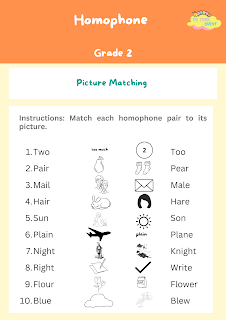Sorting Verbs:
Regular and Irregular
Verbs can be
tricky, especially when it comes to using them in the past tense. Some verbs
follow a simple pattern where you just add "-ed" at the end, while
others completely change their form. Let’s dive into understanding how to sort
verbs into regular and irregular categories, and practice using them in
sentences in the past tense.
What are Regular Verbs?
Regular verbs
follow a standard pattern when changing from the present tense to the past
tense. Most of the time, you simply add “-ed” to the base form of the verb. For
example:
- Walk → Walked
- Talk → Talked
- Jump → Jumped
- Play → Played
This makes
regular verbs easy to spot because they follow the same rule. You don’t need to
memorize them individually, just remember to add “-ed.”
What are Irregular Verbs?
Irregular verbs
don’t follow the same rules as regular verbs. They often change completely in
their past tense form, and there isn’t a standard pattern you can follow. Here
are some common irregular verbs:
- Go → Went
- See → Saw
- Eat → Ate
- Take → Took
Since irregular
verbs don’t follow a pattern, you need to memorize each one individually. But
don’t worry, with a bit of practice, they become easier to use!
Let’s Sort Some Verbs!
Below are verbs
that need to be sorted into regular or irregular categories. Let’s first
identify them, and then we’ll use their past tense form in sentences.
Verbs to Sort:
- Dance
- Go
- Run
- Watch
- Teach
- Love
- Swim
- Sing
- Help
- Eat
Regular Verbs:
- Dance → Danced
- Watch → Watched
- Love → Loved
- Help → Helped
Irregular
Verbs:
- Go → Went
- Run → Ran
- Teach → Taught
- Swim → Swam
- Sing → Sang
- Eat → Ate
Using Verbs in Past Tense Sentences
Now that we’ve
sorted the verbs, let’s use their past tense forms in sentences.
Regular Verbs
in Sentences:
- Yesterday, I danced at the
party.
- We watched a movie last
night.
- She loved the gift I gave
her.
- They helped their friend
with homework.
Irregular Verbs
in Sentences:
- Last weekend, we went to
the zoo.
- He ran five miles in the
morning.
- The teacher taught us how
to solve the problem.
- She swam across the lake
during summer vacation.
- The choir sang beautifully
at the concert.
- I ate pizza for dinner
yesterday.
Why It’s Important to Know the Difference
Understanding
the difference between regular and irregular verbs helps you form correct
sentences, especially when speaking or writing in the past tense. Regular verbs
make things simpler because they follow a predictable pattern, while irregular
verbs require a bit more attention and memorization. Knowing these forms will
improve your writing and speaking skills as you navigate through stories,
conversations, and more.
Final Tips for Mastering Verbs
- Practice sorting verbs into
regular and irregular categories often.
- Write sentences using both types
of verbs in the past tense to reinforce what you’ve learned.
- Try to read books and pay
attention to how verbs are used in the past tense.







